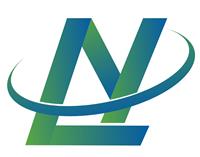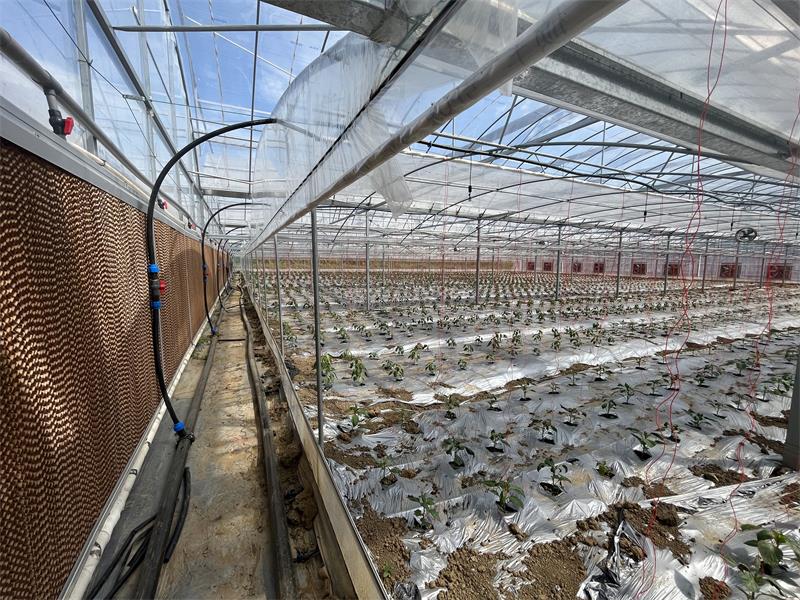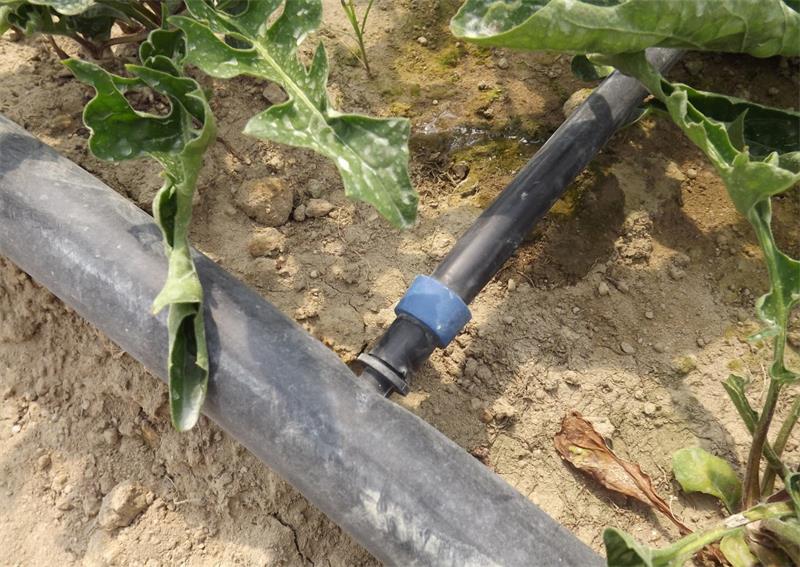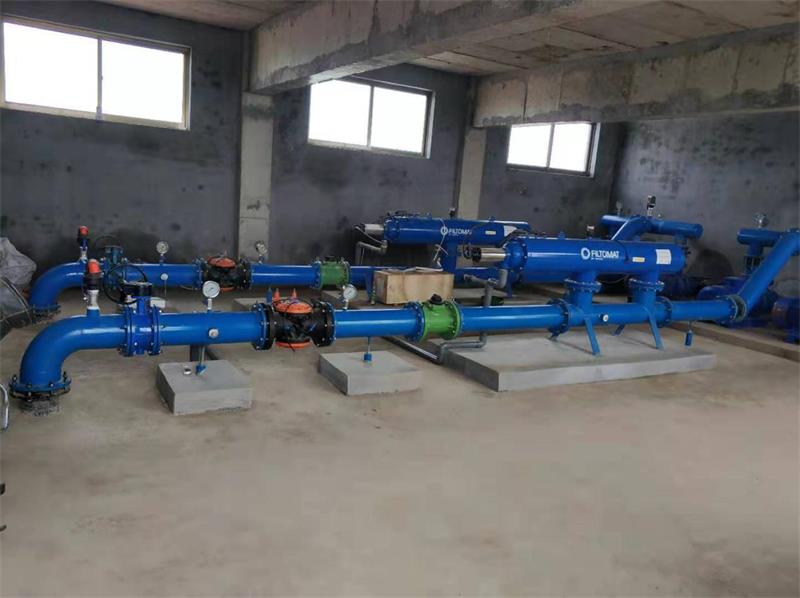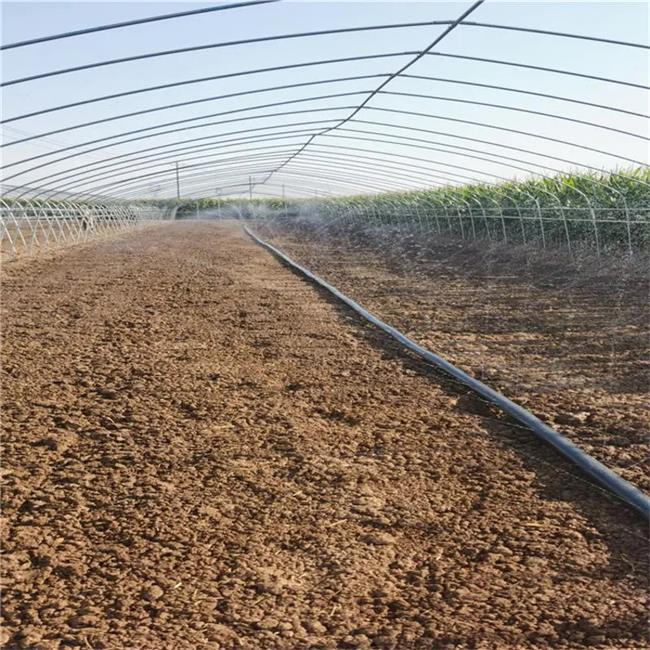Hose drip irrigation is a water-saving and yield-enhancing technique developed specifically for greenhouse production. This method involves localized irrigation, keeping the soil surface moist without water pooling, and minimizing water evaporation. Using a double-hole drip tape laid directly on the crop beds, this system provides an optimal growth environment for greenhouse crops. Below are the details of the new double-hole hose drip irrigation technique:
Irrigation Method:
Drip irrigation works by delivering water drop by drop to the soil near the plant roots through emitters installed on capillary tubes. The soil’s capillary action helps the water infiltrate and disperse within the soil, ensuring that moisture remains in a non-saturated state. This keeps the soil loose and well-aerated, promoting healthy plant growth. The principle of hose drip irrigation is to water frequently but with less volume, typically applying 7-15 cubic meters of water per acre per session.
Specific Techniques:
- Watering: To water the plants, first, open the valve of the suction pipe in the fertilizer injector, then turn the valve to its maximum setting, and connect the pressurized water source to begin watering.
- Fertilizing: For fertilizing, open the valve and turn on the switch for the suction pipe of the fertilizer injector. Position the filter at the bottom of the fertilizer solution bucket and connect the water source to begin fertilizing. After fertilization, keep the suction pipe switch open and the valve on to continue watering, which helps flush out any remaining fertilizer from the pipes.
Precautions:
- System Installation: Ensure that each section of the main pipe covers an area of no more than half an acre. The ground should be level where the hoses are laid to ensure smooth water flow.
- Drip Tape Placement: The holes in the drip tape are usually positioned upward and covered with plastic mulch. If mulch is not used, the holes can be placed facing downward.
- Water Quality: Use clean water sources. Water should not contain suspended particles larger than 0.8 mm. If necessary, use a mesh filter to purify the water. Tap water and well water typically do not require filtration.
- Handling Care: During installation and field operations, avoid scratching or puncturing the drip tape or main pipes.
- Post-Fertilization Flushing: After fertilization, continue watering with clean water for some time to prevent chemical residues from accumulating and clogging the emitters.
- Preventing Clogs: To prevent sediment and other impurities from building up and causing clogs, periodically flush the ends of the drip tape and main pipes with increased water flow.
- Storage: When changing crops, remove the equipment and store it properly in a cool, shaded area.
By following these guidelines, hose drip irrigation can be effectively used in greenhouses to conserve water and improve crop yields.
